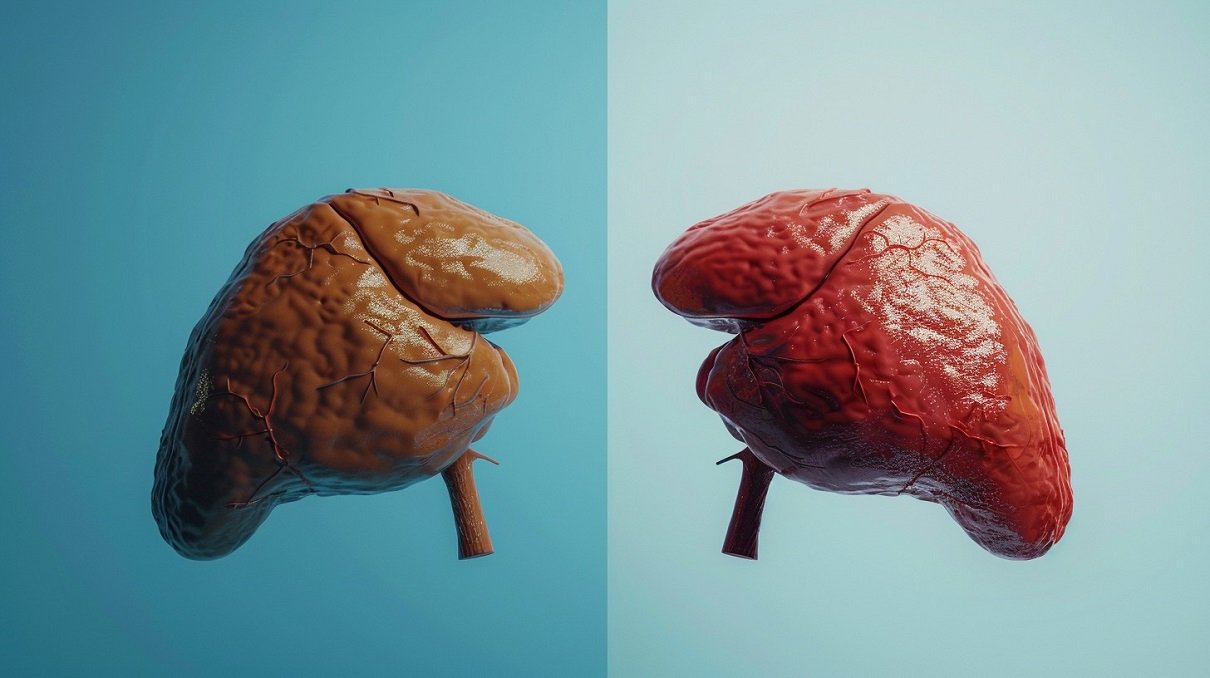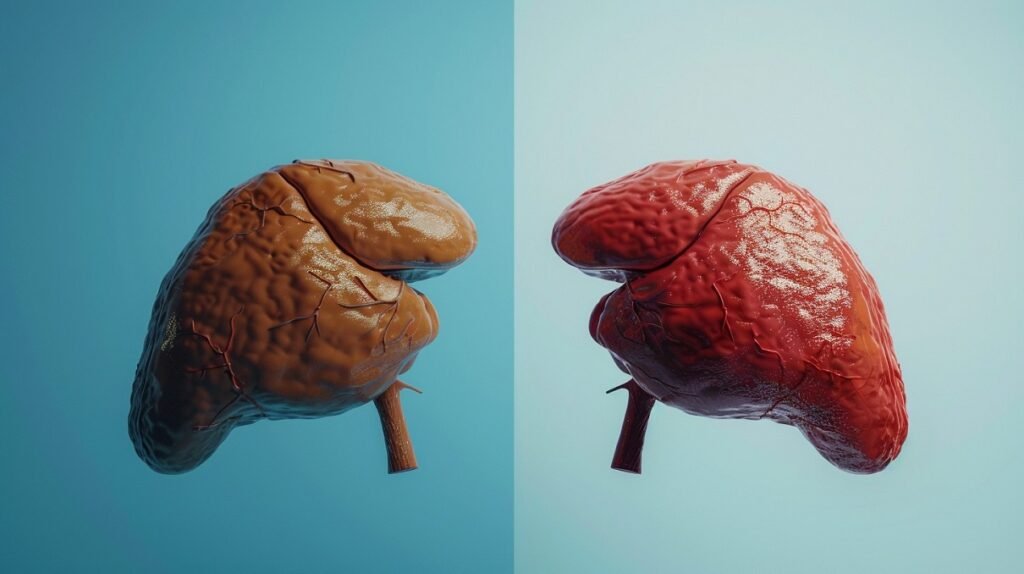Liver cirrhosis is a chronic, progressive disease that causes the liver’s tissue to scar, impairing the liver’s ability to function. The goal of this essay is to present a thorough overview of cirrhosis, covering its causes, symptoms, diagnosis, available treatments, and preventative steps. Cirrhosis of the liver is to discuss today. Hepatitis symptoms are various in numbers.

Cirrhosis Of The Liver
An Overview of the Liver Prior to discussing cirrhosis, it is important to comprehend the role that the liver plays in the human body. The liver is the largest internal organ and is in charge of several vital functions, including the metabolism of nutrients, the detoxification of harmful substances, the creation of bile for digestion, and the storage of glycogen for energy. Cirrhosis of the liver is very severe case in any person. Liver cancer symptoms female has been almost same with male.
What is Cirrhosis?
Cirrhosis is a late stage of liver fibrosis and scarring that can result from a variety of liver illnesses and ailments, including prolonged alcoholism and hepatitis. Your liver tries to heal itself every time it sustains damage. Scar tissue occurs throughout this procedure. The liver has a harder time functioning as the cirrhosis worsens and more and more scar tissue accumulates. Cirrhosis of the liver is totally related to liver.
Liver Cleansing Tea- SHOP NOW
 BUY NOW
BUY NOW
Causes of Cirrhosis
1. Alcohol Consumption:
Alcohol misuse that persists over time is one of the main causes of cirrhosis. Long-term excessive alcohol use can harm liver cells, causing inflammation and scarring. Cirrhosis of the liver is cause by alcohol.
2. Chronic Viral Hepatitis:
If treatment for hepatitis B and C viruses is not received, prolonged liver inflammation might result in cirrhosis.
3. Non-alcoholic Fatty Liver Disease (NAFLD):
A variety of liver diseases are included in NAFLD, which is defined by the buildup of fat in the liver cells. NAFLD may occasionally develop into cirrhosis.
4. Chronic Biliary Obstruction:
Chronic bile duct blockage can result in liver damage and cirrhosis. Such conditions include primary biliary cirrhosis and primary sclerosing cholangitis.
5. Autoimmune Hepatitis:
Under this condition, the immune system of the body assaults the liver cells by mistake, causing inflammation and liver damage that can develop to cirrhosis.
6. Genetic Disorders:
Hemochromatosis, Wilson’s disease, and alpha-1 antitrypsin deficiency are a few hereditary illnesses that might put a person at risk for liver damage and cirrhosis.
Signs of Liver Disease
Cirrhosis symptoms tend to get worse as the disease advances and may not be noticeable in the early stages. Signs of liver failure are various but important to notice. Typical signs and symptoms include of:
- Weakness and exhaustion• Jaundice, or eye and skin yellowing• Appetite decrease and weight reduction• Simple bleeding and bruises
• Legs and abdomen swelling (edema and ascites)
• Skin itchiness • Cognitive decline and confusion (hepatic encephalopathy)
Identification
Identification of Cirrhosis A combination of laboratory testing, imaging scans, physical examination, medical history assessment, and occasionally liver biopsy is used to diagnose cirrhosis.
1. Medical History and Physical Examination:
The medical professional may question about alcohol use, liver disease risk factors, and cirrhosis-like symptoms. Physical examination findings could include jaundice, swollen abdomen, and enlarged liver or spleen.
2. Laboratory Tests:
To evaluate liver function, blood tests can measure bilirubin, clotting factors, and liver enzyme levels. It’s also possible to run tests for autoimmune markers and viral hepatitis.
3. Imaging Studies:
The liver can be seen via imaging methods like ultrasound, CT scan, or MRI to determine the degree of liver damage, if cirrhosis is present, and whether any consequences such ascites or portal hypertension are present.
4. Liver Biopsy:
A liver biopsy may be necessary in some circumstances in order to remove a small sample of liver tissue for microscopic analysis. This aids in determining the extent of liver damage and confirming the cirrhosis diagnosis.
Therapy
Therapy for Cirrhosis Despite the fact that cirrhosis cannot be reversed, treatment aims to control symptoms, delay the course of the illness, avoid complications, and treat underlying causes.
1. Lifestyle Modifications:
Avoiding alcohol is crucial for those with alcohol-related cirrhosis in order to stop more liver damage. It is also advised to maintain a healthy weight and engage in regular exercise and diet.
2. Medications:
Certain cirrhosis symptoms and complications may be treated with medication. For instance, lactulose or rifaximin may be recommended for hepatic encephalopathy, while diuretics may be used to treat ascites.
3. Treatment of Underlying Causes:
In order to delay the progression of the condition and lower the risk of complications, treatment of underlying liver diseases such as autoimmune hepatitis, NAFLD, or viral hepatitis is crucial.
4. Liver Transplantation:
Hepatic transplantation may be an option in severe cirrhosis patients accompanied by hepatic failure. A healthy liver from a deceased or living donor is used to replace the diseased liver during a liver transplant.
Prevention
Preventing Cirrhosis Adopting good living habits and addressing modifiable risk factors are key components of cirrhosis prevention. Fatty liver disease treatments are various like vaccination etc.
1. Limit Alcohol Consumption:
Preventing alcohol-related cirrhosis is best achieved by avoiding excessive alcohol consumption. It may be helpful for those who have a history of alcohol misuse to seek assistance from medical experts or support organizations.
2. Vaccination:
It is advised to get vaccinated against hepatitis B in order to avoid chronic hepatitis B infection, which might result in cirrhosis. Preventing cirrhosis can also be achieved by screening for hepatitis C and treating affected persons appropriately.
3. Maintain a Healthy Weight:
It is possible to lower the risk of obesity-related liver damage and non-alcoholic fatty liver disease by maintaining a healthy weight through diet and exercise.
4. Practice Safe Sex:
It is possible to lower the chance of developing cirrhosis and stop the spread of viral hepatitis by engaging in safe sexual practices and abstaining from high-risk habits like sharing needles.
Conclusion
Liver tissue scarring is the hallmark of the dangerous and perhaps fatal disease known as cirrhosis of the liver. It can be brought on by a number of liver illnesses and disorders, such as fatty liver disease, viral hepatitis, and long-term alcohol misuse. To control symptoms, stop complications, and limit the progression of the disease, early diagnosis and treatment are crucial. People can lower their risk of cirrhosis and preserve liver health by addressing modifiable risk factors and implementing healthy lifestyle choices.
